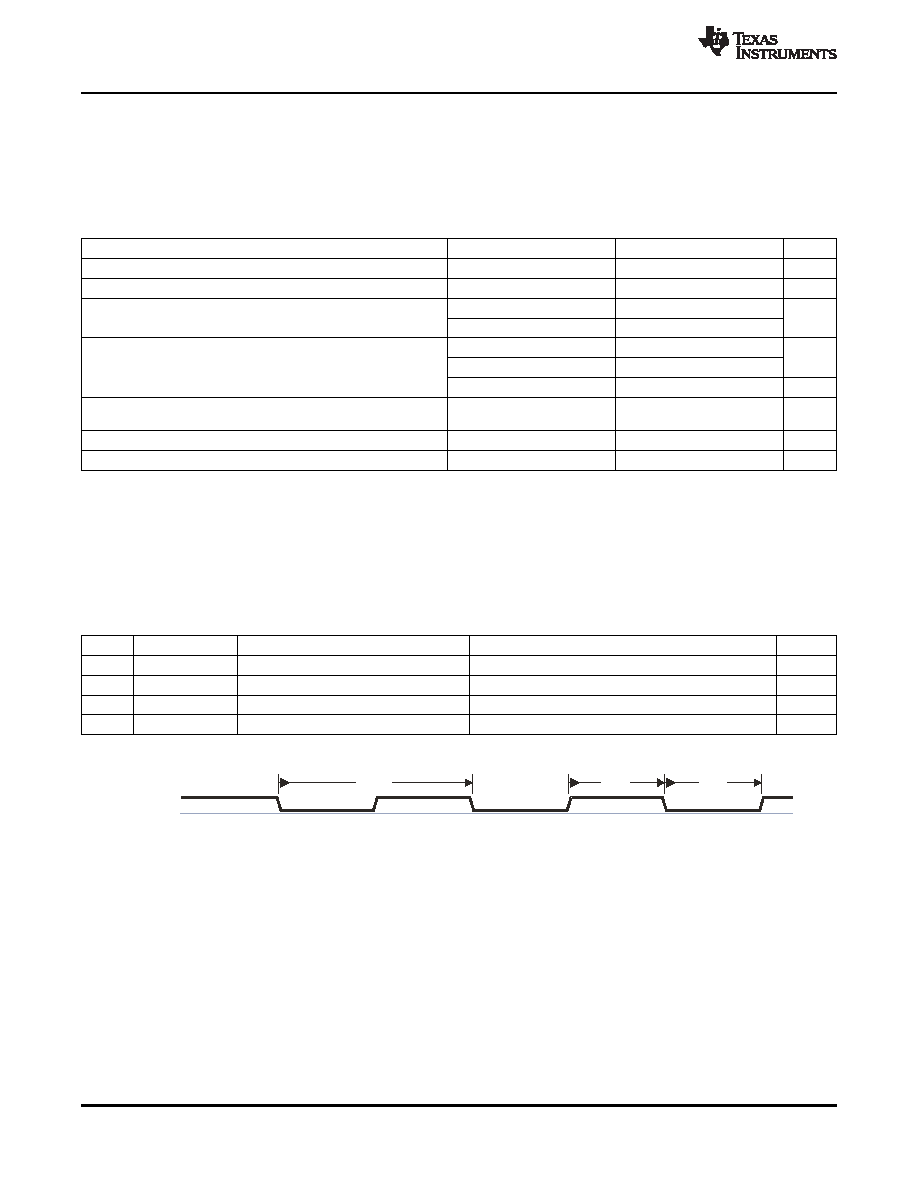- 您現(xiàn)在的位置:買賣IC網(wǎng) > PDF目錄98286 > TPS65920BZCH (TEXAS INSTRUMENTS INC) SPECIALTY CONSUMER CIRCUIT, PBGA139 PDF資料下載
參數(shù)資料
| 型號: | TPS65920BZCH |
| 廠商: | TEXAS INSTRUMENTS INC |
| 元件分類: | 消費家電 |
| 英文描述: | SPECIALTY CONSUMER CIRCUIT, PBGA139 |
| 封裝: | 10 X 10 MM, 0.65 MM PITCH, GREEN, PLASTIC, NFBGA-139 |
| 文件頁數(shù): | 101/115頁 |
| 文件大小: | 1232K |
| 代理商: | TPS65920BZCH |
第1頁第2頁第3頁第4頁第5頁第6頁第7頁第8頁第9頁第10頁第11頁第12頁第13頁第14頁第15頁第16頁第17頁第18頁第19頁第20頁第21頁第22頁第23頁第24頁第25頁第26頁第27頁第28頁第29頁第30頁第31頁第32頁第33頁第34頁第35頁第36頁第37頁第38頁第39頁第40頁第41頁第42頁第43頁第44頁第45頁第46頁第47頁第48頁第49頁第50頁第51頁第52頁第53頁第54頁第55頁第56頁第57頁第58頁第59頁第60頁第61頁第62頁第63頁第64頁第65頁第66頁第67頁第68頁第69頁第70頁第71頁第72頁第73頁第74頁第75頁第76頁第77頁第78頁第79頁第80頁第81頁第82頁第83頁第84頁第85頁第86頁第87頁第88頁第89頁第90頁第91頁第92頁第93頁第94頁第95頁第96頁第97頁第98頁第99頁第100頁當前第101頁第102頁第103頁第104頁第105頁第106頁第107頁第108頁第109頁第110頁第111頁第112頁第113頁第114頁第115頁

HFCLKIN
CH0
CH1
019-017
SWCS037G
– MAY 2008 – REVISED APRIL 2011
When the external clock signal is present on the HFCLKIN ball, it is possible to use this clock instead of
the internal RC oscillator and then synchronize the system on the same clock. The RC oscillator can then
go to idle mode.
Table 11-2 lists the input clock electrical characteristics of the HFCLKIN input clock.
Table 11-2. HFCLKIN Input Clock Electrical Characteristics
Parameter Description
Configuration Mode Slicer
Min
Typ
Max
Unit
Frequency
19.2, 26, or 38.4
MHz
Start-up time
LP(1)/HP(2) (sine wave)
4
μs
LP/HP (sine wave)
0.3
0.7
1.45
Input dynamic range
VPP
BP(3)/PD(4) (square wave)
0
1.85(5)
LP
175
μA
Current consumption
HP
235
BP/PD
39
nA
Harmonic content of input signal (with 0.7-VPP amplitude):
LP/HP (sine wave)
–25
dBc
second component
VIH
Voltage input high
BP (square wave)
1
V
VIL
Voltage input low
BP (square wave)
0.6
V
(1)
LP = Low-power mode
(2)
HP = High-power mode
(3)
BP = Bypass mode
(4)
PD = Power-down mode
(5)
Bypass input max voltage is the same as the maximum voltage provided for the I/O interface (IO.1P8V).
Table 11-3 lists the input clock timing requirements of the HFCLKIN input clock when the source is a
square wave. Figure 11-4 shows the HFCLKIN squared input clock timings.
Table 11-3. HFCLKIN Square Input Clock Timing Requirements with Slicer in Bypass
Name
Parameter
Description
Min
Typ
Max
Unit
CH0
1/tC(HFCLKIN)
Frequency, HFCLKIN
19.2, 26, or 38.4
MHz
CH1
tW(HFCLKIN)
Pulse duration, HFCLKIN low or high
0.45*tC(HFCLKIN)
0.55*tC(HFCLKIN)
ns
CH3
tR(HFCLKIN)
Rise time, HFCLKIN(1)
5
ns
CH4
tF(HFCLKIN)
Fall time, HFCLKIN(1)
5
ns
(1)
Default drive capability is 40 pF.
Figure 11-4. HFCLKIN Squared Input Clock
11.2.3 32-kHz Input Clock
A 32.768-kHz input clock (often abbreviated to 32-kHz) generates the clocks for the RTC. It has a low-jitter
mode where the current consumption increases for lower jitter. It is possible to use the 32-kHz input clock
with an external crystal or clock source. Depending on the mode chosen, the 32K oscillator is configured
one of two ways:
An external 32.768-kHz crystal through the 32KXIN/32KXOUT balls (see Figure 11-5). This
configuration is available only for master mode (for more information, see Section 12).
An external square/sine wave of 32.768 kHz through 32KXIN with amplitude equal to 1.8 or 1.85 V
slave modes (for more information, see Section 12).
86
Clock Specifications
Copyright
2008–2011, Texas Instruments Incorporated
focus.ti.com: TPS65930/TPS65920
相關PDF資料 |
PDF描述 |
|---|---|
| TPS65930A2ZCHR | SPECIALTY CONSUMER CIRCUIT, PBGA139 |
| TPS65930A2ZCH | SPECIALTY CONSUMER CIRCUIT, PBGA139 |
| TPS65930BZCHR | SPECIALTY CONSUMER CIRCUIT, PBGA139 |
| TPS65930BZCH | SPECIALTY CONSUMER CIRCUIT, PBGA139 |
| TPS65950ZXNR | SPECIALTY CONSUMER CIRCUIT, PBGA209 |
相關代理商/技術參數(shù) |
參數(shù)描述 |
|---|---|
| TPS65920BZCH | 制造商:Texas Instruments 功能描述:Power Supply IC |
| TPS65920BZCHR | 功能描述:開關變換器、穩(wěn)壓器與控制器 Int Pwr Mgmt IC RoHS:否 制造商:Texas Instruments 輸出電壓:1.2 V to 10 V 輸出電流:300 mA 輸出功率: 輸入電壓:3 V to 17 V 開關頻率:1 MHz 工作溫度范圍: 安裝風格:SMD/SMT 封裝 / 箱體:WSON-8 封裝:Reel |
| TPS65921B1ZQZ | 功能描述:PMIC 解決方案 Integrated Power Mgmt IC RoHS:否 制造商:Texas Instruments 安裝風格:SMD/SMT 封裝 / 箱體:QFN-24 封裝:Reel |
| TPS65921B1ZQZR | 功能描述:PMIC 解決方案 Integrated Power Mgmt IC RoHS:否 制造商:Texas Instruments 安裝風格:SMD/SMT 封裝 / 箱體:QFN-24 封裝:Reel |
| TPS65921BZQZ | 功能描述:PMIC 解決方案 Int Power Mgmt IC RoHS:否 制造商:Texas Instruments 安裝風格:SMD/SMT 封裝 / 箱體:QFN-24 封裝:Reel |
發(fā)布緊急采購,3分鐘左右您將得到回復。